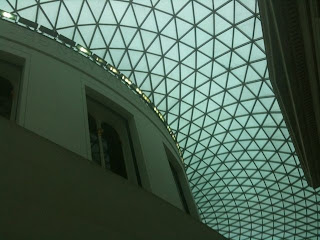
Seen from the Royal observatory, the Queen’s house has an unobstructed view from many angles. What is really interesting, and called Palladian architecture, is that the wings are not connected to the house, and can be accessed by a columnar walkway.
To live there in the 17th century must have been something different. Different in a sense that architecturally, not it was unique at this moment in time, so it would have commanded respect and attention.
One of my favourite parts of the Queen’s house was the Tulip Staircase.

The Tulip Staircases are seem to be completely unsupported from the bottom, and play tricks with my mind. I couldn’t help but stare at them and just wonder how they were still standing almost 400 years later. The ironwork of the railing was really entrancing and also very gorgeous. Had I been living there, coming down the staircases would always put a smile on my face and also give me a sense of power and money, as I would have known that this staircase was unique, and I was indeed in the Queen’s House and was meant to be living like royalty.

For me, the queen’s house was just a really cool place to see. Even the ceilings of one of the rooms I couldn’t stop staring. I lied down on the bench and just looked at the intricate work of the woodcarving and was just amazed:
Queens house from across the river:




